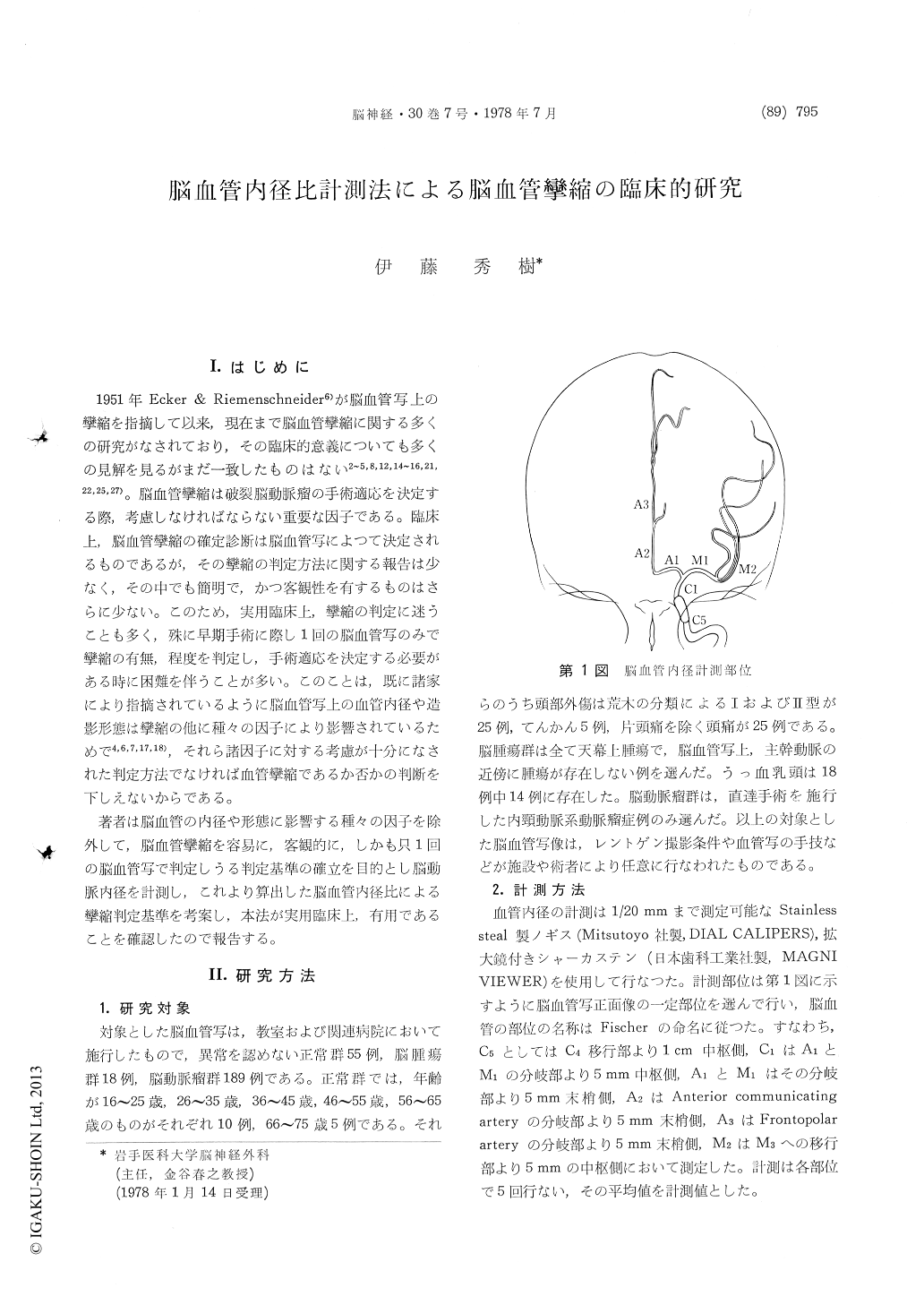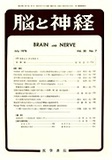Japanese
English
- 有料閲覧
- Abstract 文献概要
- 1ページ目 Look Inside
I.はじめに
1951年Ecker & Riemenschneider6)が脳血管写上の攣縮を指摘して以来,現在まで脳血管攣縮に関する多くの研究がなされており,その臨床的意義についても多くの見解を見るがまだ一致したものはない2〜5,8,12,14〜16,21,22,25,27)。脳血管攣縮は破裂脳動脈瘤の手術適応を決定する際,考慮しなければならない重要な因子である。臨床上,脳血管攣縮の確定診断は脳血管写によつて決定されるものであるが,その攣縮の判定方法に関する報告は少なく,その中でも簡明で,かつ客観性を有するものはさらに少ない。このため,実用臨床上,攣縮の判定に迷うことも多く,殊に早期手術に際し1回の脳血管写のみで攣縮の有無,程度を判定し,手術適応を決定する必要がある時に困難を伴うことが多い。このことは,既に諸家により指摘されているように脳血管写上の血管内径や造影形態は攣縮の他に種々の因子により影響されているためで4,6,7,17,18),それら諸因子に対する考慮が十分になされた判定方法でなければ血管攣縮であるか否かの判断を下しえないからである。
著者は脳血管の内径や形態に影響する種々の因子を除外して,脳血管攣縮を容易に,客観的に,しかも只1回の脳血管写で判定しうる判定基準の確立を目的とし脳動脈内径を計測し,これより算出した脳血管内径比による攣縮判定基準を考案し,本法が実用臨床上,有用であることを確認、したので報告する。
The postoperative prognosis of the ruptured intracranial aneurysm is known to be bad when the patient shows a sign of the cerebral vasospasm. Therefore, the preoperative diagnosis of the cere-bral vasospasm is vitally important for the deter-mination of operative indication.
The purpose of this study is to establish a standard method to evaluate the severity of vasospasm on the arteriogram. Further, it was examined if there is any correlation between the severity of the vasospasm identified preoperatively and the postoperative prognosis of the ruptured aneurysm. Anterior-posterior projection of carotid angiogram was examined on 262 cases in this study, of which 189 had cerebral aneurysms, 18 brain tumors and the remaining 55 control group.
Acculate measurements of the inner diameters were performed on the particular sites; the internal carotid artery, the anterior cerebral artery and the middle cerebral artery. The diameter ratio of cerebral artery to the C5 portion of the ipsilateral internal carotid artery was calculated to assess the degree of the vascular spasm.
The findings are as follows :
1) The inner diameters of cerebral arteries varied not only by vasospasm, but also by intracranial pressure, hypoplasia and other varying factors. Many varying factors other than vasospasm, however, were found to be cancelled each other when the relative values of the diameters, namely the ratios described above, were used.
2) Using these diameter ratios, the severity of vasospasm was classified into 4 grades. The 189 patients with ruptured aneurysm were classified into 4 types depending on their postoperative mortality rate, namely type I, II, III and IV.
3) The patients in type I demonstrated the grade 1 vasospasm in all sites C1A1M1, and their mortality rate was 17.9%. The type II included the patientswho exhibited the grade 2 vasospasm in either one site of C1A1M1, and their mortality rate 35.7%.
4) Similarly, the type III included the patients who showed the grade 3 vasospasm in either one site, and mortality rate 41.2%. The type IV consisted of the patients who showed the grade 4vasospasm in either one site.
5) It was concluded that the above classification based on the type of vasospasm corresponded well with their postoperative prognoses and is very useful for the determination of operative indication.

Copyright © 1978, Igaku-Shoin Ltd. All rights reserved.


